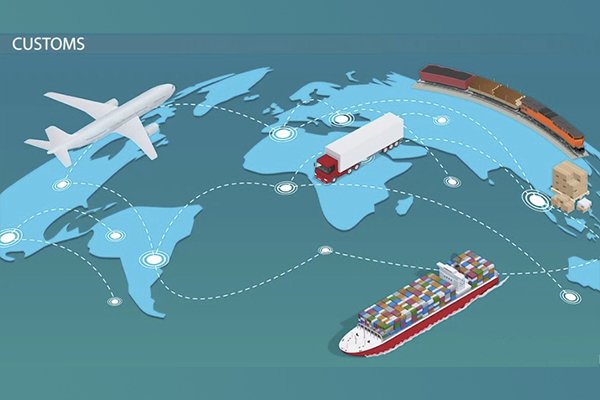What to Ask Before Choosing a Chinese Power Strip Supplier

I’ve sourced power strips from China for years now, and let me tell you—choosing the right supplier isn’t just about price. It’s about asking the right questions upfront so you avoid trouble down the line.
Before working with any Chinese power strip supplier, you should ask about certifications1, lead time, customization options2, and proof of export experience. These questions reveal whether they’re factory-ready—or just another trading company without real capacity.
Let’s break down what you really need to ask before making your next wholesale order.
Do They Have Experience with CE, UL, or RoHS Certified Products?
When selling to Europe or the U.S., certifications aren’t optional—they’re mandatory.
Always ask if the supplier has experience producing CE, UL, or RoHS certified power strips3. These marks prove the product meets key safety, health, and environmental standards4 in your target markets.

What to Ask:
- Can they show valid CE/UL/RoHS certificates?
- Are those certificates for the exact product you’re ordering?
- Which lab performed the testing?
| Certification | Required Market | What It Proves |
|---|---|---|
| CE | European Union | EU safety & EMC compliance |
| UL | United States | U.S. electrical/fire safety |
| RoHS | EU & Global | Restriction of hazardous materials |
A good factory should be able to provide reports with matching product photos and models—not generic samples.
What Is Their MOQ, Lead Time, and Customization Capability?
I’ve learned the hard way: small orders, tight deadlines, or special features? You’d better confirm details before signing anything.
Ask about minimum order quantity (MOQ), lead time, and whether they can support OEM/ODM customization—like branded packaging, special cable lengths, or smart functions.

What to Clarify:
- What’s the MOQ for your model?
- How long is the standard lead time?
- Do they support custom logos, molds, or packaging?
| Factor | What to Look For |
|---|---|
| MOQ | 500–2,000 pcs is typical in this space |
| Lead Time | 20–35 days after deposit |
| Customization | Logo printing, color, socket layout |
Be specific about what you need. Otherwise, they might send you a “stock” item that doesn’t fit your market.
Can They Provide Factory Audits, Test Reports, or Third-Party Verifications?
Real manufacturers have nothing to hide. The shady ones? They’ll stall or give vague excuses.
Before trusting a new supplier, ask for factory audit reports5, product test reports, or third-party inspections6. These show the factory is legally operating, has quality control, and meets export standards.

What to Ask For:
- Any recent BSCI, ISO9001, or TÜV audits?
- Sample lab test reports (CE, EMC, LVD, etc.)
- Can you send a QC team or book a video tour?
| Document Type | Why It Matters |
|---|---|
| Factory Audit Report | Verifies legality, capacity, QC |
| Product Test Report | Confirms compliance, safety |
| Third-Party Inspection | Ensures your order meets specs |
If they hesitate to provide these, consider it a red flag.
What Types of Power Strips Have They Exported to Markets Like Yours?
Experience in your region can make all the difference—especially when it comes to plug types, voltages, and packaging expectations7.
Ask if they’ve shipped similar products to your country or market. A supplier with regional experience8 is less likely to make critical mistakes.

What to Confirm:
- Do they offer UK, EU, US, or AU plug versions?
- Have they worked with supermarket buyers, DIY stores, or OEM brands?
- Any photos or samples from previous shipments?
| Region | Plug Type | Voltage/Frequency |
|---|---|---|
| Europe | Type C/E/F | 220V / 50Hz |
| UK | Type G | 230V / 50Hz |
| US | Type A/B | 120V / 60Hz |
| Australia | Type I | 230V / 50Hz |
This helps you avoid mismatches like wrong fuses, non-compliant plugs, or packaging that confuses your local customers.
Conclusion
Choosing the right power strip supplier in China is like building a foundation—you need it solid, or everything falls apart later. Ask about certifications, capacity, third-party proof, and export experience. The answers you get will tell you everything you need to know about who you’re really dealing with.
-
Understanding the necessary certifications ensures product safety and compliance, protecting your business and customers. ↩
-
Exploring customization options can help you differentiate your products and meet specific market demands. ↩
-
Understanding these certifications is crucial for ensuring product safety and compliance in international markets. ↩
-
Exploring these standards helps ensure that your products meet necessary regulations and protect consumers. ↩
-
Understanding factory audit reports can help you ensure supplier reliability and product quality. ↩
-
Exploring third-party inspections can provide insights into quality assurance and compliance in manufacturing. ↩
-
Exploring packaging expectations can enhance your product’s appeal and compliance in different markets. ↩
-
Understanding regional experience can help you avoid costly mistakes in shipping and ensure compliance with local standards. ↩






